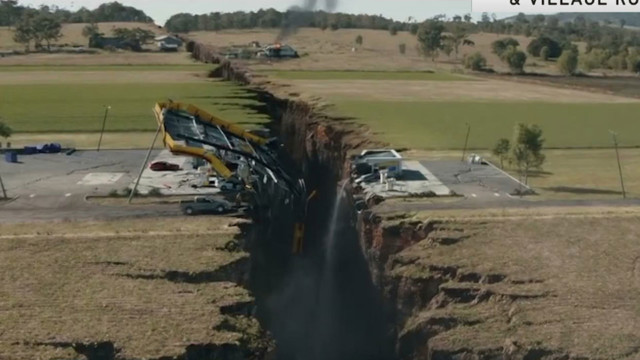Californians are no strangers to earthquakes – the west coast is one of the most seismic regions in the United States. Many don’t even notice the smaller ones.
But they will notice the ‘big one’ when it happens. It’s coming – and is likely to cause billions of dollars worth of damage and leave many dead or injured.
CGTN’s Phil Lavelle reports.
Experts say a large earthquake is long overdue along the San Andreas fault and are predicting that it could measure between 7 and 8 magnitude on the Richter scale.
The most recent earthquake in Los Angeles was in Northridge in 1994 – that measured 6.7.
But with no real way of giving warning and impossible to predict when the quake will come, the question is whether those in Los Angeles – which is expected to be badly hit – are deliberately avoiding preparing for what lies ahead.
“I think cost is one factor, so is complacency” Kenneth Hudnut from the USGS said, explaining why many have not chosen to retrofit their homes to withstand an earthquake. “It’s been a long time since the damaging 1989 earthquake in the Bay area and 1994 quake here in LA. People tend to forget, but the Mexico earthquake recently was certainly a reminder of how important this is.”
The city of Los Angeles has a mandatory retrofitting program in place. But the area many refer to as L.A. (which includes dozens of other cities within LA County) lacks such a stringent approach, with some enforcing retrofitting and others employing a more lax approach.
Kenneth has prepared a model of a standard apartment block with the homes built on top of an outdoor parking structure. He calls the first story the ‘soft story’ and tells us that there are around 13,500 of these buildings in the area.
“This structure was not designed to handle ground motions, even from the much more common space moderate magnitude earthquakes that are closer in,” he says as he moves the ground violently. The apartment block stays in tact, but falls to the side and lands on the ground next to where it stood moments earlier, the beams holding it above the parking lot, now lying flat. He says retrofitting is a fairly straightforward process, which involves installing a metal frame around the outside, making the building less likely to fall down, or to at least give those inside more time to evacuate.
Rick White is a building expert from Larrabure Framing. A Timber Framer by trade, he takes us around a building site in Northridge, where that devastating quake happened nearly 24 years ago, and shows us how new buildings are now as earthquake-resistant as they can be.
Metal ratchets form part of the structure. They tighten by themselves over time as the building beds in and moves naturally. In theory, a tremor or quake would make them tighten even more, effectively making the building even more secure.
“In new construction, we can really get into the bones of the building and be able to approach it. We’re not going to have that beam come off the foundation”, he says as he points to the integrity of this new apartment complex.
But as for older buildings, the emphasis is more on keeping them standing and secure for long enough to get people out:
“A lot of those [older] buildings are at risk right now and so there’s new program to retrofit those buildings.
I think the approach is to really look at how you get people out of those buildings safely and not as much emphasis on keeping the building up. We know that some of these buildings will come down. What we want to do is to make people be able to get out in time and get to safety and then we’ll deal with the building after the event.
The goal is by 2024 to be able to have all of our buildings – new and existing – retrofitted with seismic hardware to be able to withstand the next big one.”
The other concern is how the economy will cope. California is one of the largest economies in the world. Some estimates put it as the world’s sixth largest, others in 13th or 14th place. Either way, a hit to the financial infrastructure here could have devastating consequences, with metaphorical shockwaves traveling across the country.
Kaycea Campbell is an Economics Professor at Pierce College near Los Angeles.
“There are three things that could happen. You’re going to have a huge amount of physical damage that’s going to affect supply lines and production. So that’s the buying and selling which will actually stop. That’s in the short term. The other thing is that you’re going to have a shock overall to the financial market and I think the big piece is actually a drain on the insurance industry. They’re going to be paying out huge sums of money on claims which would mean an actual drain on the capital that’s available to insurance companies,” she said.
Most people carry on with their lives with the coming earthquake at the back of their minds. There is nothing anybody can do about it and only limited steps that can be taken to prepare for an event with no known date. The question here, not necessarily IF it will happen, but WHEN. And how ready can we – should we – all really be.
 CGTN America
CGTN America

